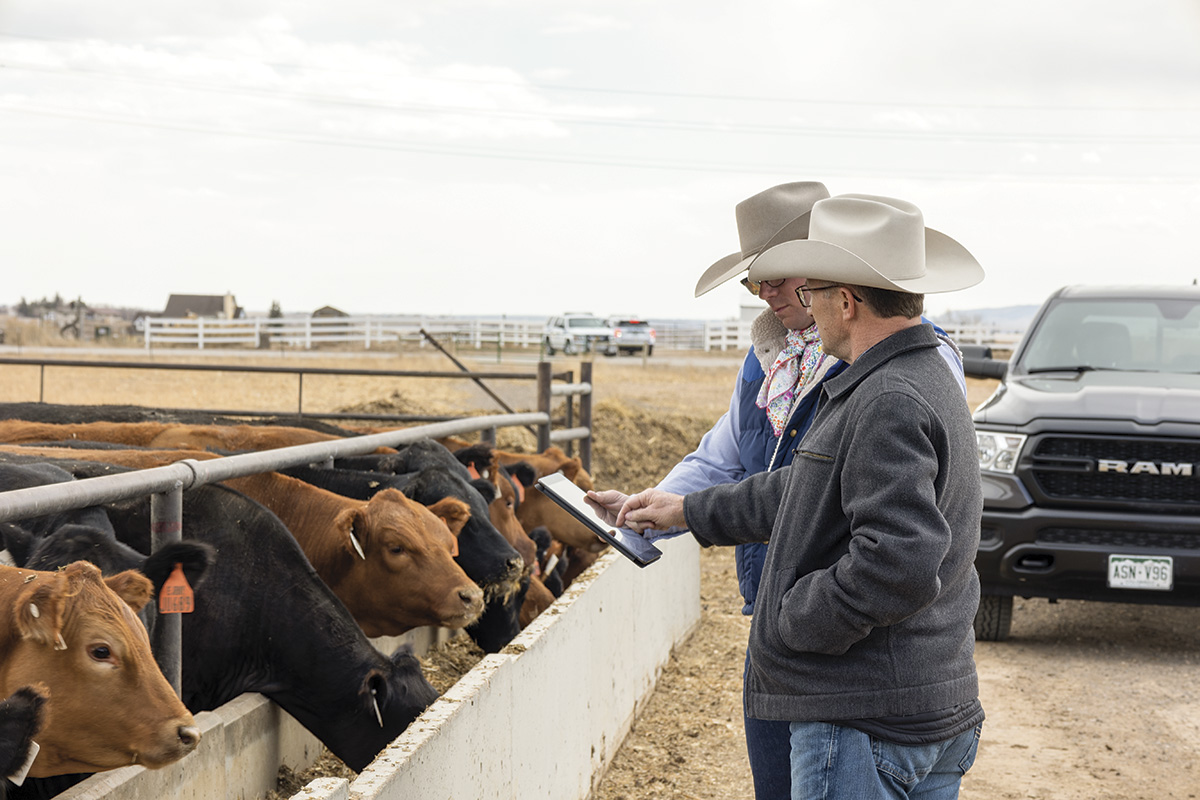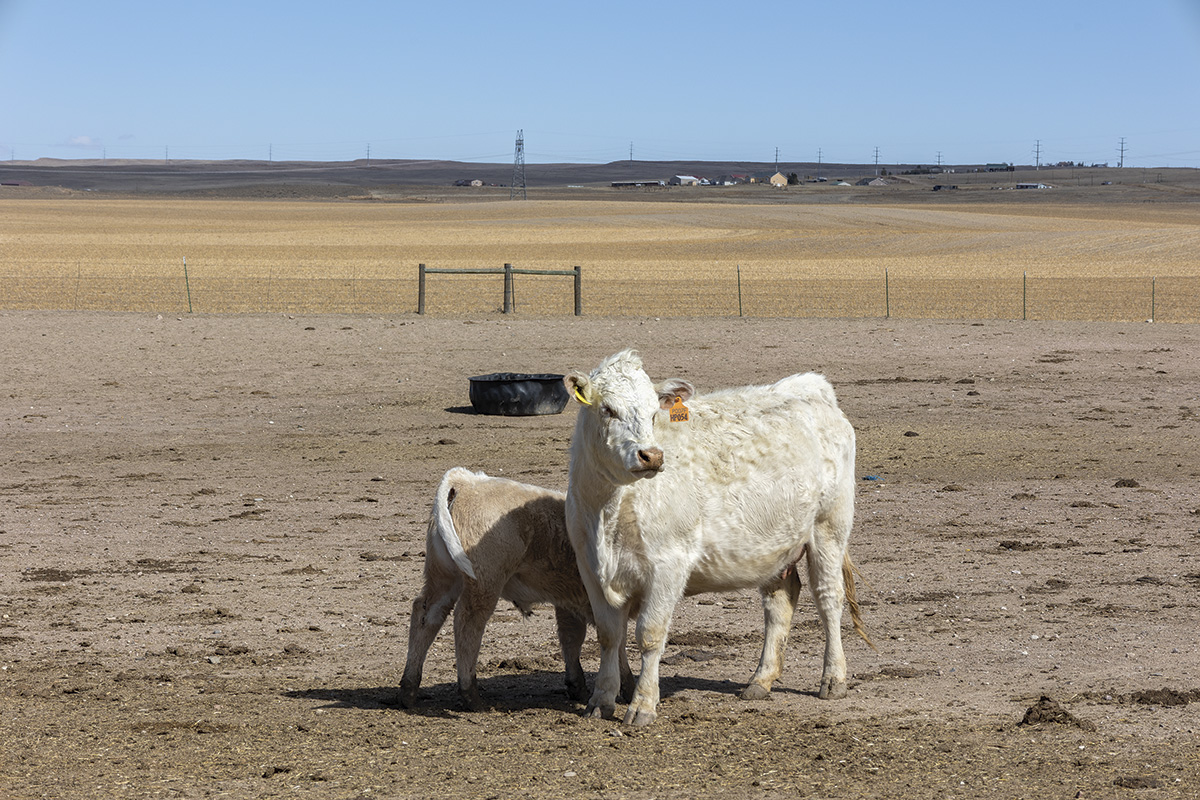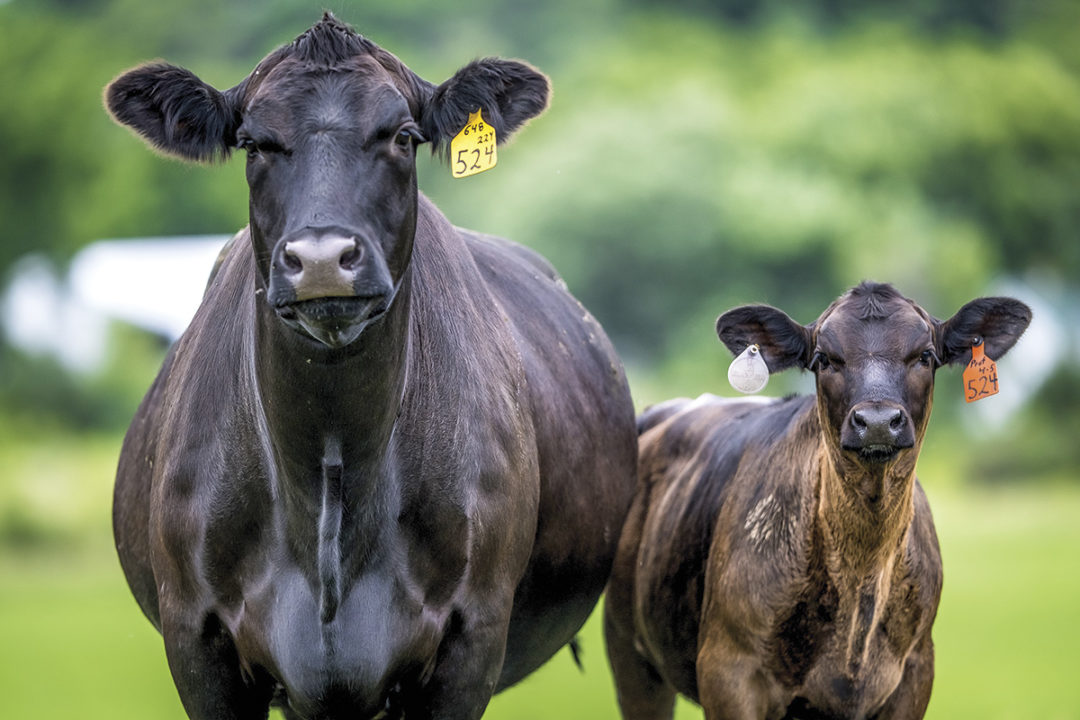The foundations for beef cattle genomic testing began over a century ago, when forward-thinking breed associations started collecting pedigree and phenotypic data on registered animals. Breeders studied pedigrees, aspiring to create matings that would yield more valuable animals with desirable physical traits.
By the 1970s, parentage testing was commercially available through blood typing, helping to verify recorded pedigrees. Later, parentage would be conducted using genetic markers. Accurate parentage data, advanced statistical models and more powerful computers allowed breed associations to estimate expected progeny differences (EPDs), numerically describing the genetic merit for several traits.
Genomic trait discovery
The true catalyst behind genomic testing as we know it today was the Human Genome Project, launched in October 1990.
Discoveries from the human genome helped scientists to sequence the bovine genome in the 2000s, identifying genetic variation associated with economically important traits like growth rate, carcass quality and milk production.
“I realized immediately that this was going to change everything,” says Jerry Taylor, a professor emeritus in the University of Missouri’s Animal Sciences Division. “In the near future, we would have the tools to identify the DNA variants that caused animals to be different from each other, and the way that we would select animals would ultimately be driven by knowledge about their genomes and not just their pedigrees and phenotypes.”
The first genomic tests
Beef genomic research gained traction in Australia in the early 1990s. The country’s early genomic innovation was largely thanks to the Commonwealth Scientific and Industrial Research Organization (CSIRO), an Australian government scientific research agency. CSIRO makes its research publicly available and works with governments, businesses and communities to translate its research into practical solutions.
“Geneticists in Australia found a DNA marker for a gene called thyroglobulin, a hormone that affects the thyroid and therefore had some relationship to marbling,” recalls Jim Johnson, Zoetis beef cattle genetics strategic account lead. “That was the first marbling gene test that was developed.”
Australia-based Genetic Solutions was one of the first companies to offer a commercially available DNA test for marbling and tenderness in the late 1990s.
 The expected broad adoption of genetic testing of commercial beef cattle in the coming years will likely contribute to significant gains in productivity and efficiency. Photo courtesy of Zoetis Precision Animal Health.
The expected broad adoption of genetic testing of commercial beef cattle in the coming years will likely contribute to significant gains in productivity and efficiency. Photo courtesy of Zoetis Precision Animal Health.
Testing the accuracy
Genetic Solutions sent its first genetic tests to the U.S., arriving at Louisiana-based Monarch Farms, owned by Vic Castellon. Castellon’s family background running a butchery and his training in pharmacy gave him a unique interest in cattle genetics. After reading about Genetic Solutions’ work, he decided to give it a try.
Dan Ellis, a consultant for Castellon, remembers testing those first females in 1998. He helped Castellon send in 10 samples from his donor cows. “In those days,” Ellis says, “results took several months, cost around 130 dollars and only covered two traits.”
After receiving the results, they wanted to confirm them. They submitted samples again, mixing up the numbers, to validate they’d get the same results. Ellis also sent in a few extra samples from commercial cows while they were at it.
When that next set of results came back, those 10 original samples yielded the exact same results. With confirmation in hand, the commercial cow results for marbling and tenderness were the biggest surprise. One commercial cow had all the favorable genetic variants for marbling and tenderness.
“And that’s when my lightbulb went off,” Ellis says. “These genetic markers are present in all cattle, registered and commercial. I thought, there’s a pretty good chance this cow we’re all looking for that has the most markers for desirable traits might exist anywhere in the gene pool. I was all in at that point. My optimism was that we could learn a lot about cattle that maybe had a similar pedigree but different genetics in them.”
Genomic testing in the U.S.
Castellon bought the rights to those marbling and tenderness markers and any future markers out of Australia for North, Central and South America.
Until then, only universities, government entities or breed associations offered genetic testing services. Castellon established Bovigen in 2003 to make testing commercially available in the U.S., starting with GeneSTAR Black for coat color and GeneSTAR for marbling and tenderness.
In the mid-2000s, the National Genetics of Carcass Merit Project (NGCMP) helped companies like Bovigen add many more markers associated with marbling, tenderness, milk and more to genomic tests. Around that time, Igenity and other genomic startups were founded, launching similar competitive products. Pfizer Animal Health, now Zoetis, acquired Bovigen and Catapult Genetics in 2008 to take a leading role in genetics research and development and expand solutions for livestock customers.
A tale of two bulls
In the late 2000s and early 2010s, seedstock producers could obtain genomic predictions from available tests in addition to EPDs for registered cattle through breed societies. However, it became apparent that it was troublesome to have genomic predictions and EPDs as separate data points.
Take two Angus bulls, TC Stockman and TC Rancher, as an example. They’re full siblings, born just a year apart. When they were born, their EPDs were the same, based on their pedigree. That changed over time, based on the performance of each bull and the calves he sired.
“After they sired thousands of calves, we learned they were very, very different – even with the same parents,” Ellis says. Performance records added to traditional genetic evaluations revealed that TC Rancher was a -1.0 Birthweight (BW) and +9 Calving Ease Direct (CED), while his full brother TC Stockman was a +7.8 BW and -6 CED. "Genetic testing likely would have predicted the dramatic differences in these two full brothers before we bred the first cow.”
As more cattle were genotyped, genomic information was folded directly into National Cattle Evaluation to create genomic-enhanced expected progeny differences (GE-EPDs), a single number for each trait that reflected all the available data: pedigree, phenotype and genotype. This huge milestone gave cattle producers access to more accurate predictions very early in life, before the phenotypes could be observed and measured.
 The development of GE-EPDs has allowed beef producers to more accurately analyze cattle based on their pedigrees, as well as phenotypic and genotypic data. Photo courtesy of Zoetis Precision Animal Health.
The development of GE-EPDs has allowed beef producers to more accurately analyze cattle based on their pedigrees, as well as phenotypic and genotypic data. Photo courtesy of Zoetis Precision Animal Health.
Bringing testing to the commercial producer
By the early 2010s, advances in genotyping technologies such as the development of the Illumina BovineSNP50, the 50K chip, was used more extensively in research and commercial applications, increasing the number of genetic markers analyzed and making genetic predictions more accurate and comprehensive. In the years following, more innovation in genotyping platforms improved the technology, making it more cost-effective and scalable. This helped genomic testing become more widely adopted in the purebred and seedstock industry.
Commercial producers, however, generally didn’t have access to genomic technologies outside of bull selection. The first 50K chip genetic test for commercial replacements (75% or greater Angus), GeneMax by Zoetis and Angus Genetics Inc., was released in 2014, offering commercial cow-calf producers the opportunity to make faster genetic progress in their cow herds.
Where we are today and a glimpse at the future
Today, cattle producers have more information than ever to make management decisions. It begins with using genomic predictions to inform seedstock breeding and characterize the genetic merit of herd sires and includes genetic tests to inform replacement heifer selection. More recently, it extends to using genomic predictions in fed cattle.
While the beef cattle industry is in the early days of using genomic technologies in commercial cattle, we can look to the dairy industry for a glimpse at what the future may hold. Millions of commercial, non-registered dairy females have been evaluated using genomic technologies to inform a broad range of breeding and management decisions. The broad adoption of genetic testing in dairy cattle has accelerated genetic progress, contributed to significant gains in productivity and efficiency, and is dramatically reshaping dairy breeds. The same opportunity exists in commercial beef cattle.
Reflecting on the history of genetic testing in beef cattle, it is interesting to consider how much our methods and tools have evolved. The dichotomy between what was once standard practice and is now outdated, or what was once a crazy idea and is now commonplace, is fascinating.
As we look toward the future, ask yourself: What are you not doing today that you might regret 10 years from now?
The rise of genomics in the beef cattle industry
- 1970s: Breed associations begin estimating EPDs based on pedigrees and parentage data
- 1990: The Human Genome Project successfully sequences the human genome
- 1990s: Australian government funds genomic research; Australian company Genetic Solutions introduces first commercially available DNA test for marbling and tenderness
- 1998: First beef cattle genomic tests in U.S. performed on females at Louisiana’s Monarch Farms
- 2003: Bovigen makes genomic testing commercially available in U.S.
- 2003-04: Bovine genome sequenced
- 2010s: Genomic testing is widely adopted in U.S. seedstock industry; many breed associations develop GE-EPDs
- 2014: First 50K chip genetic test for commercial cattle released








